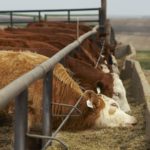CNS Canada — The Canadian dollar slipped after Britain voted Thursday to leave the European Union, a trend which one financial analyst expects to continue in an otherwise uncertain environment. But the loonie hasn’t fallen far enough to bring support to Canadian commodity markets. “Short-term, we’re going to be dealing with the day-to-day volatility and












